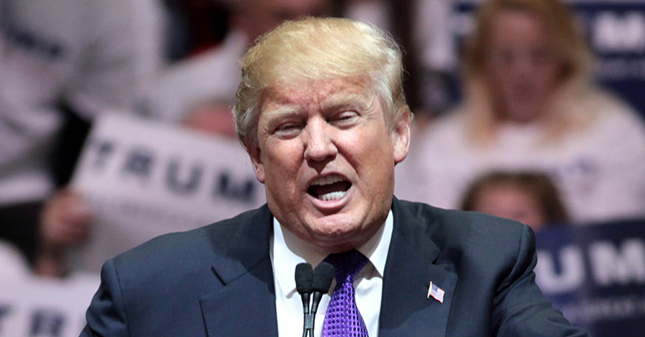
With an allegation of Russian-style censorship hanging in the air in 2013, dozens of news organizations loudly protested to the Obama White House that journalists were being denied proper access for newsgathering. Taking collective action, the news outlets, including ABC, CBS, Fox, and NBC, requested “an immediate meeting” with White House officials “to resolve this very serious situation.”
Specifically, the allegation was that the Obama White House was “routinely” excluding news photographers from presidential events that were recorded exclusively by a White House staff photographer. The administration claimed the events were “private.” News organizations countered that the White House's subsequent release of its own, in-house photos of those events on social media meant the events hadn’t actually been “private.”
The conflict became intense. “A mini-revolt by news organisations against White House press restrictions gathered momentum Monday as USA Today joined other media shops to have declared a boycott on officially issued photographs,” The Guardian reported.
In their letter to the White House, co-signed by 38 organizations including various news outlets, the White House Correspondents' Association, and the White House News Photographers Association, the groups wrote, “As surely as if they were placing a hand over a journalist’s camera lens, officials in this administration are blocking the public from having an independent view of important functions of the executive branch of government."
One National Journal headline at the time announced, “Obama’s Image Machine: Monopolistic Propaganda Funded by You.” And a New York Times photographer protested to the White House that its restrictions were “just like Tass,” the Soviet state news agency.
Why is this collective outcry from 2013 relevant again now? And why is it worth noting the strategy news organization adopted to protest allegations of White House restrictions? Because today, those same news organizations face an incoming Trump administration that seems sure to institute new media restrictions that are far more stringent than the Obama White House's rules for photographers. Yet we don’t we hear much in terms of an organized protest.
Back in 2013, dozens of individual news outlets joined press organizations to take strong action in documenting their grievances with the Obama White House over the photo restrictions, demanding that meetings be held and the problem solved. So why have they been so quiet and timid in terms of airing their objections with Trump?
And no, 2013 wasn’t the only time news outlets banded together under Obama and took collective action to protest White House press limitations.
In 2009, as a feud between Fox News and the Obama administration over Fox’s coverage boiled over – the White House labeled the conservative channel “not a news network” – the administration excluded Fox News from interviewing “pay czar” Kenneth Feinberg, who was handling distribution of TARP funds during the financial crisis. The other television news networks showed solidarity by staging a “revolt” and boycotting their scheduled interviews.
“All the networks said, that’s it, you’ve crossed the line,” CBS News’ Chip Reid reported at the time.
And don’t forget that during the recent presidential campaign, about 17 journalists representing a multitude of news organizations joined forces and met for hours in Washington, D.C., because they were so angry with how Hillary Clinton's campaign was supposedly limiting access for journalists and they wanted to strategize about the best way to confront the campaign.
In those three instances, when Washington journalists felt they had been slighted by Democrats, they took collective action. There were no signs of timidity. So what explains the media’s current passivity toward Trump while he seems poised to take a far worse stance toward the press?
It’s true that the media’s 2013 protest came while Obama was in office, and that Trump hasn’t been sworn in yet. But it’s already common knowledge within the press corps that dramatic changes regarding White House access may be looming -- changes that make the complained-about restrictions on White House photographers under Obama look tame. In fact, expected Trump changes, the Times reported last month, could mean “a loss of transparency that would hinder the press’s role as a conduit for information to the people.”
Why haven’t dozens of news organizations fired off a letter to Trump’s transition team, sternly demanding that he not abolish or diminish the presence of White House reporters? Why haven’t they demanded “an immediate meeting” with Trump officials “to resolve this very serious situation”?
Recall that during the campaign, the petulant Trump often banned specific news organizations from his events. I don’t remember news outlets taking collective action against Trump in the spirit of all-for-one defiance. I don’t remember them boycotting scheduled interviews with Trump in solidarity with the news outlet that he had banned. Do you?
In late 2015, several news organizations did discuss their concerns about access with the Trump campaign, according to The Huffington Post, but seemingly nothing came of it. In fact, “facing the risk of losing their credentialed access to Trump's events, the networks capitulated,” BuzzFeed reported.
Last November, after Trump ditched the press in New York City in order to go eat dinner, the White House Correspondents' Association publicly urged him to travel with a press pool, and his transition team promised it would “operate a traditional pool.” Two months later, the WHCA is still trying to get Trump to establish a formal press pool that mirrors that of previous presidents. (FYI, Trump ditched the press again last month to go play golf.)
Yet despite the stonewalling from Trump’s team, it was reported last week that the WHCA will host a reception for Trump’s communication aides in coming weeks.
So instead of getting an angry letter denouncing press restrictions the way Obama officials did, Trump’s team is receiving social invitations.